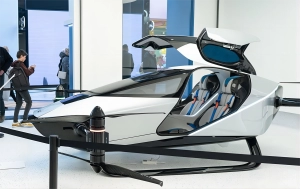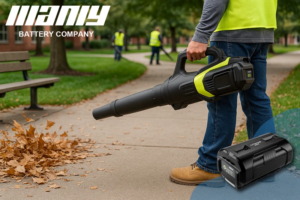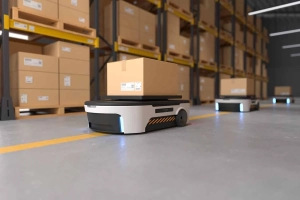Jogos Asiáticos HangZhou 2023: Revolução do Cão Robótico
Índice
- Jogos Asiáticos HangZhou 2023: Revolução do Cão Robótico
- Cães robóticos aumentam a eficiência nos Jogos Asiáticos de HangZhou 2023
- Futuro dos esportes: como os cães robóticos roubam a cena nos Jogos Asiáticos de HangZhou
- Íon de lítio versus ácido de chumbo: qual bateria domina na tecnologia moderna?
- Decodificando baterias de íons de lítio: classificações principais
- Bateria MANLY
- Conclusão

Cães robóticos aumentam a eficiência nos Jogos Asiáticos de HangZhou 2023
Robotic dogs, precision-manufactured and encapsulating numerous high-tech capabilities, have marked a distinctive presence in their operation. Initially, they employ a suite of sensor equipment, including LIDAR and cameras, to real-time collect data on their own location and that of the athletes, thus achieving autonomous navigation and positioning. Subsequently, equipped internally with advanced artificial intelligence modules, the robotic dogs can analyze athletes' postures, providing accurate feedback and support. Finally, they possess efficient battery and power systems, ensuring a stable working status throughout the competition.Moreover, these robotic dogs are quadruped robots, meaning they traverse on four legs rather than wheels. The advantage herein is that they can maintain stability on uneven ground and adapt to various terrains and obstacles. This marks the first global event to utilize quadruped robots; previously, many robots, such as those delivering water and towels to athletes at the 2018 PyeongChang Winter Olympics, were wheeled.Furthermore, these robotic dogs are fitted with fixtures on their backs to grip discuses, capable of bearing standard discuses of 1 to 2 kilograms, specially designed for the HangZhou Asian Games. Once a discus is thrown, a robotic dog races to staff located 50 meters away, who then affix the discus to the dog’s back, allowing it to return to the athlete. Consequently, athletes neither have to retrieve their discuses nor wait for staff to deliver them, saving time and energy. With a running speed of approximately 3.5 meters per second, a robotic dog can cover a distance of roughly 7200 meters during a competition, equivalent to 18 laps of a track field!This innovative point is not limited to the athletic field but also provides services in the badminton court. Intriguingly, videos have shown an athlete using a remote control to direct these robotic dogs in delivering bottled water.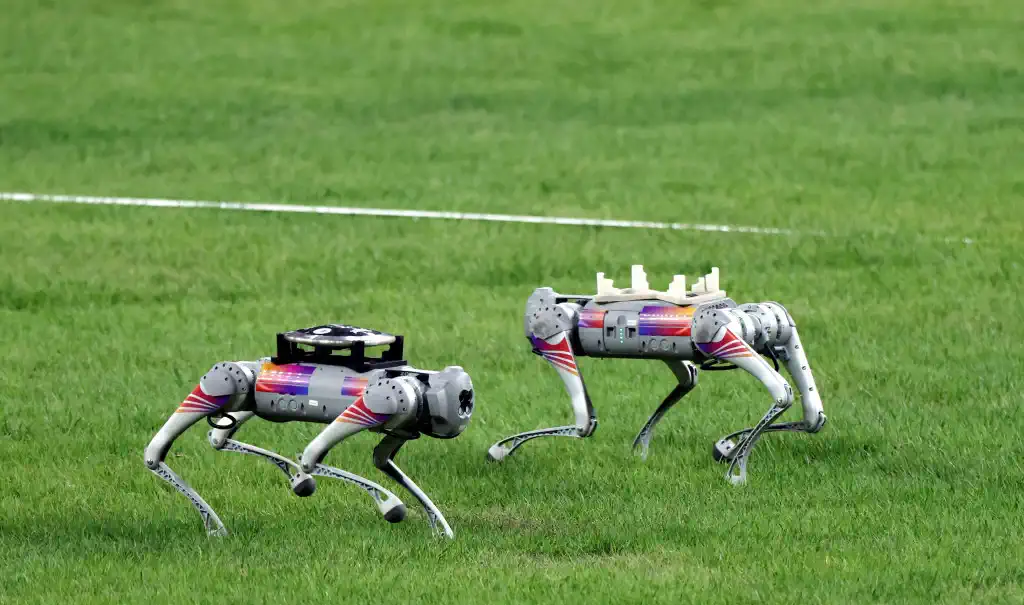
Futuro dos esportes: como os cães robóticos roubam a cena nos Jogos Asiáticos de HangZhou
The HangZhou Asian Games’ pioneering use of robotic dogs to retrieve discuses can undoubtedly be described as groundbreaking. These robotic dogs not only heightened the efficiency but also added an element of entertainment to the games. Whenever they finish a task, they automatically "lie down" by the field, poised for the next instruction. Such innovation underscores the vast potential of technology in sporting events, bestowing the HangZhou Asian Games with a unique charm.Subsequently, the track and field events of the HangZhou Asian Games captivated the attention of media and audiences worldwide. The focus wasn’t solely because it's one of the critical competitions of the HangZhou Asian Games, but notably due to the emergence of this robotic dog, which became a spotlight on the field. Some netizens commented, "The HangZhou Asian Games are always up for surprises!" This novel method of transportation reflects the profound impact of technology on sports.Furthermore, the debut of the robotic dog undeniably added a splash of color to the HangZhou Asian Games. This is not just a showcase of technological prowess but also a glimpse into the future of sports. It is foreseeable that, in the days to come, robotic dogs will play an increasingly significant and broader role across various sectors. Whether in sports or daily life, robotic dogs are set to become invaluable allies and reliable companions for humans.For the realm of sports, introducing robotic dogs propels the advancement of sports technology, enhancing athletes' competitive levels. Through intelligent sensing and analysis systems, these dogs can assist athletes in better understanding their movements and techniques, potentially resulting in improved competition outcomes. In daily life, robotic dogs can not only offer companionship but also deliver various conveniences, aiding individuals in adapting to the fast-paced modern societal rhythm.By examining the coverage and description of the HangZhou Asian Games’ robotic dogs, we can discern not just the role and advantages of these robotic dogs in competitions, but also the transformative influence of technology in sports. Robotic dogs serve as more than just platforms showcasing technological might; they are intelligent companions and aids in sports. The deployment of artificial intelligence and robotic technology equips these dogs with the ability for intelligent sensing and communication, making them potent allies in work and life.Lastly, as technology continues to evolve and progress, future robotic dogs are anticipated to boast even more functionalities and application scenarios, bringing added convenience and joy to human life. The fusion of humanity and technology promises a brighter future – a vision we collectively look forward to and strive towards.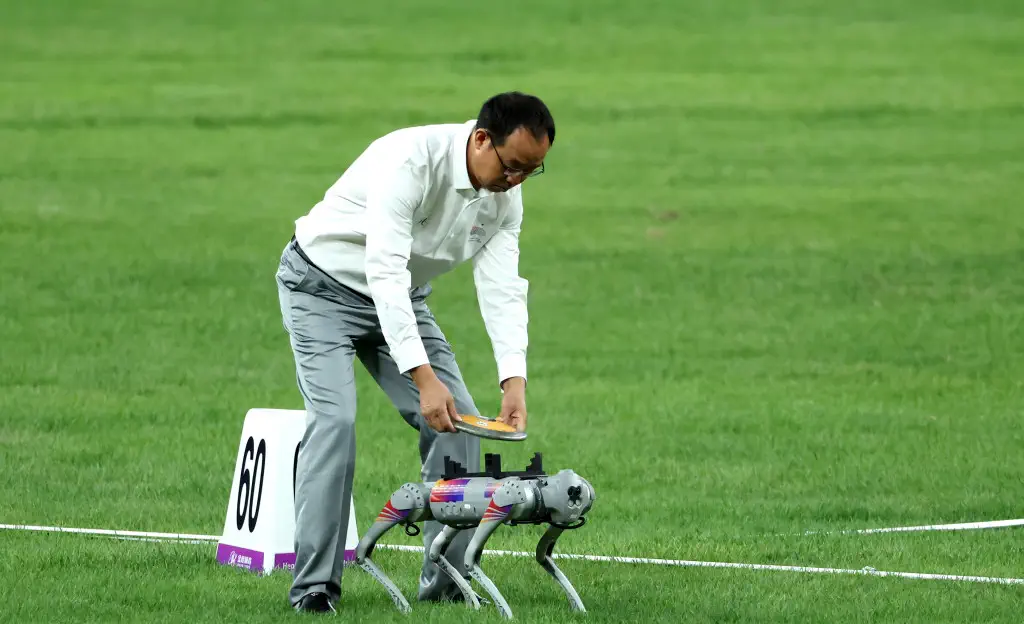
Íon de lítio versus ácido de chumbo: qual bateria domina na tecnologia moderna?
In 2023, the HangZhou Asian Games emerged as a paradigm of the integration of technology and sports. Beyond the intense athletic competition, the HangZhou Asian Games also unveiled an eye-catching technological achievement – the use of robotic dogs. These robotic dogs played a unique role on the competition field, and notably, one standout feature was their reliance on advanced lithium battery technology for power.Instead of conventional internal combustion engines or cable power sources, the robotic dogs at the HangZhou Asian Games relied on lithium batteries. Lithium batteries are high-energy-density batteries, and due to their lightweight and efficient attributes, they're extensively used across various applications, ranging from smartphones to electric vehicles. This battery technology not only supplied ample power but also boasted exceptional durability, catering to the diverse needs on the HangZhou Asian Games' venues.In the past, robotic dogs typically relied on lead-acid batteries as their primary power source. While lead-acid batteries are stable, their limited capacity and heavier weight constrained the mobility and efficiency of the robotic dogs. However, with continuous technological breakthroughs, the adoption of lithium-ion batteries has brought about transformative changes for robotic dogs.Lithium-ion batteries are renowned for their high energy density, lightweight properties, and rechargeable features, enabling robotic dogs to excel on the Asian Games competition field. This battery technology offers extended battery life, faster charging speeds, and increased power output, allowing robotic dogs to operate efficiently throughout competitions.Now, as the shift from lead-acid, nickel-cadmium, or nickel-metal hydride batteries to lithium-ion ones is trending, what distinct characteristics do lithium-ion batteries possess?- Eles têm uma relação energia-peso e uma relação energia-volume mais altas.
- Sua voltagem é elevada, com uma única voltagem de célula de íon de lítio sendo 3,6V, aproximadamente equivalente a três baterias de níquel-cádmio ou níquel-hidreto metálico conectadas em série.
- Apresentam autodescarga mínima, permitindo armazenamento prolongado, marcando uma de suas características mais superiores.
Decodificando baterias de íons de lítio: classificações principais
Typically, when we discuss power lithium batteries, the most commonly mentioned are lithium iron phosphate batteries, lithium manganese oxide batteries, lithium cobalt oxide batteries, and ternary lithium-ion batteries. So, what are the different classifications of lithium-ion batteries?primeiramente, com base nos materiais internos, as baterias de íons de lítio geralmente podem ser divididas em duas categorias principais.- Baterias de metal de lítio: Essas baterias geralmente usam dióxido de manganês como material do eletrodo positivo e lítio metálico ou sua liga como material do eletrodo negativo. Eles também utilizam uma solução eletrolítica não aquosa.
- Baterias de íon-lítio: These batteries often employ a lithium alloy metal oxide as the positive electrode material, graphite for the negative electrode, and a non-aqueous electrolyte. Although lithium metal batteries boast a high energy density - theoretically reaching 3860 watts/kg - their unstable nature and inability to be recharged prevent them from serving as reusable power lithium batteries. Por outro lado, as baterias de íon-lítio, devido às suas capacidades recarregáveis, são vigorosamente utilizadas como baterias de lítio de potência significativa. No entanto, combiná-los com diferentes elementos resulta em desempenho variado em materiais de eletrodos positivos, levando a intensos debates sobre o melhor caminho a seguir na indústria.
Bateria MANLY
Bateria MANLY: o auge da fabricação de baterias na China Established in China's vibrant core, MANLY Battery stands tall as the nation's foremost wholesale fornecedor de bateria, com mais de 13 anos de experiência diferenciada. Nosso legado, moldado por um compromisso inabalável e excelência incomparável, solidifica nossa posição na área de produção de baterias.Uma potência de produção: Daily, our manufacturing lines produce an impressive 6MWh of battery cells and packs. Complementing this, we assemble upwards of 3,000 batteries daily – a testament to our dedication to volume without forsaking quality. Located over a massive 65,000 square meter expanse, our advanced manufacturing facilities anchor in China's top hubs: Shenzhen, Dongguan, and Huizhou.Diversas soluções de bateria da MANLY:Apresentamos uma extensa coleção de baterias LiFePO4/íon de lítio, variando de 6V a 72V, meticulosamente elaboradas para uma infinidade de aplicações:- Armazenamento de energia solar
- Backup de energia residencial e industrial
- Robôs de alta tecnologia, incluindo cães robóticos de nível militar
- Suporte para estações base
- Luzes de rua solares ecológicas
- Unidades consistentes de fonte de alimentação ininterrupta (UPS)
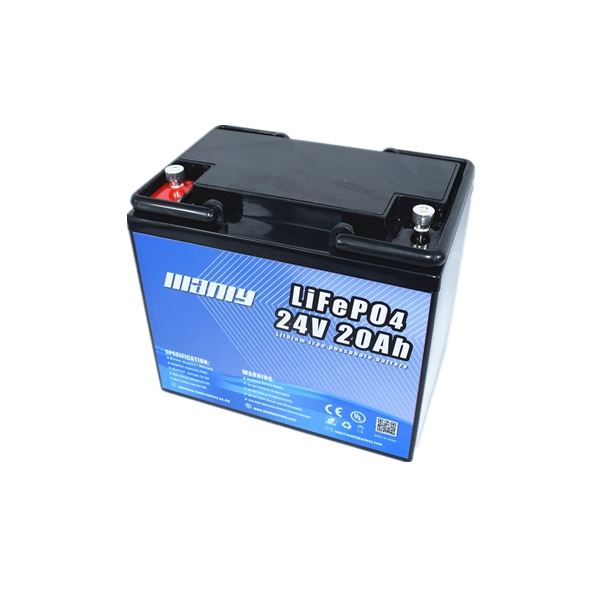 Personalização no seu melhor:Seus requisitos exclusivos são nosso comando. Nossa fabricação de baterias sob medida oferece personalização incomparável, abrangendo voltagem, tamanho, design e muito mais - garantindo que cada unidade atenda às demandas do cliente.Produtos aclamados internacionalmente:A confiança na MANLY é ancorada por certificações globais como UN38.3, IEC62133, UL e CE. Nossos elogios refletem nossa dedicação a padrões superiores.Uma década de confiança com garantia:A promessa MANLY é reforçada por uma garantia robusta de 10 anos, refletindo nossa confiança na longevidade do produto.Segurança e desempenho combinados:Além do desempenho de alto nível, nossas baterias enfatizam a segurança do usuário, com recursos como proteção contra curto-circuito, barreiras contra sobrecarga e verificações de corrente. Mesmo após impactos intensos, funcionam perfeitamente, equipados com versáteis adaptabilidades de conexão.Confiabilidade mesmo em extremos:
MANLY's LiFePO4 batteries surpass other lithium variants, delivering consistently between -20°C to 75°C (-4°F to 167°F), making them ideal for tough conditions. Yet, for optimal longevity, we suggest adhering to our recommended temperature guidelines during charging.Elevada Eficiência Energética:Por que comprometer? Experimente o auge da eficiência com nossas baterias LiFePO4, apresentando uma taxa de utilização de energia de 95%. Superando as baterias convencionais de chumbo-ácido, que atingem um pico de cerca de 70%, as nossas garantem um carregamento rápido e minimizam o desperdício de energia.Interações aprimoradas de bateria:A experiência do usuário é redefinida com nossas baterias, complementadas por comodidades modernas, como sincronização Bluetooth e um indicador intuitivo de nível de energia.
Personalização no seu melhor:Seus requisitos exclusivos são nosso comando. Nossa fabricação de baterias sob medida oferece personalização incomparável, abrangendo voltagem, tamanho, design e muito mais - garantindo que cada unidade atenda às demandas do cliente.Produtos aclamados internacionalmente:A confiança na MANLY é ancorada por certificações globais como UN38.3, IEC62133, UL e CE. Nossos elogios refletem nossa dedicação a padrões superiores.Uma década de confiança com garantia:A promessa MANLY é reforçada por uma garantia robusta de 10 anos, refletindo nossa confiança na longevidade do produto.Segurança e desempenho combinados:Além do desempenho de alto nível, nossas baterias enfatizam a segurança do usuário, com recursos como proteção contra curto-circuito, barreiras contra sobrecarga e verificações de corrente. Mesmo após impactos intensos, funcionam perfeitamente, equipados com versáteis adaptabilidades de conexão.Confiabilidade mesmo em extremos:
MANLY's LiFePO4 batteries surpass other lithium variants, delivering consistently between -20°C to 75°C (-4°F to 167°F), making them ideal for tough conditions. Yet, for optimal longevity, we suggest adhering to our recommended temperature guidelines during charging.Elevada Eficiência Energética:Por que comprometer? Experimente o auge da eficiência com nossas baterias LiFePO4, apresentando uma taxa de utilização de energia de 95%. Superando as baterias convencionais de chumbo-ácido, que atingem um pico de cerca de 70%, as nossas garantem um carregamento rápido e minimizam o desperdício de energia.Interações aprimoradas de bateria:A experiência do usuário é redefinida com nossas baterias, complementadas por comodidades modernas, como sincronização Bluetooth e um indicador intuitivo de nível de energia.
